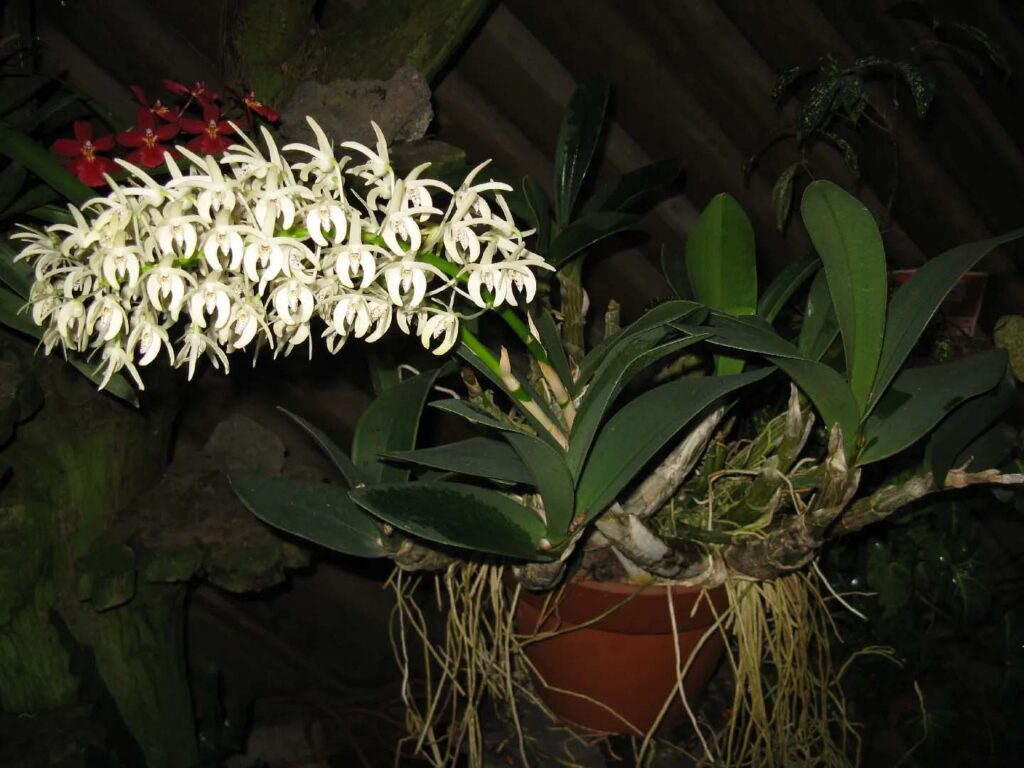Orchids become one of the favorite choices for indoor gardeners because of their easy maintenance. Orchids can live for 15 years with proper care. Though it is easy to care for, you still need some consideration about maintenance. Otherwise, orchids may not give you the best output even without reaching their age.

How do I water my orchids
Watering is crucial for orchids, a change in watering can affect the plan with overwatering or under watering leading the plant to root rot and eventually death.
First, you need to observe the water-consuming behavior. Some need more compared to others, species wise it can vary.
For the first few days, water a little once every three days, obviously orchids need less than that. After 3 days if you see the soil gets dry, then it’s time to water again.
Use room-temperature water, you may have heard of giving ice cubes to the roots, but I won’t suggest that. If you don’t think your tap water is safe meaning it contains high minerals and salt, consider using rainwater or distilled water.
Usually watering once 5 to 7 days is recommended. A rule of thumb is don’t water until the potting mix dries. Stick your finger into the potting mix; if it feels dry about an inch below the surface, it’s usually time to water. Water in the morning helps keep plants fresh throughout the day and evaporates the extra water.
If the potting mix is not dry and you water it again, it can cause root rot. Don’t let the water accumulate at the bottom. Inspect your orchid root, if the color of the root is not green or silver, there may be a problem of rotting. Adjust your watering routine accordingly.
Which potting mix is right
Orchids are epiphytic plants that grow on the tree. So the condition is, that the potting mix needs to give a lot of aeration to the root, has a good drainage system, can hold moisture releasing the extra water, and the potting mix doesn’t contain soil. Because soil can’t fulfill the demand for epiphytic orchids. We’re talking on a general scale, there are a lot of terrestrial orchid species (Bletilla, Christmas orchid, etc) that can grow in soil.
A perfect orchid potting contains four things pumice (which can be replaced by vermiculite or perlite), sphagnum moss, tree bark (which can be replaced by Tree Fern Fiber and coco fiber), and charcoal.
Tree bark is a primary component, it mimics the natural habitat and the root can connect their instinct with tree bark. It provides aeration and drainage for the roots.
Sphagnum moss helps to retain moisture releasing extra water. Some orchids are even dependent on moss in their natural habitat.
Pumice adds further aeration and drainage to the mix, creating a great holding material for the roots.
Charcoal helps to absorb impurities and odors, providing a fresh environment for orchid roots.
The mixing ratio is 5 parts orchid bark, 3 parts pumice, 2 parts sphagnum moss, and a little bit of charcoal at the bottom. After 10 months or 1 year, the mixing will start to decompose so when this happens you need to repot the plant in a new potting mix.
The right humidity
Orchids require 50 to 70 percent humidity. You can monitor the humidity with a hygrometer to ensure the humidity is in the required condition. If there is a pond near your house that will be a great source of humidity.
You can use a humidifier or a mister to increase the humidity. If you have another indoor plant or a group of them, try to keep all of them together, it will create a microenvironment. A humidity tray is another natural way to develop humidity, place humidity trays filled with water and pebbles beneath the orchid pots. As the water evaporates, it increases the humidity around the plants.
Best temperature for your orchid
Temperature needs to be kept between 70°F to 80°F (21°C to 27°C) with a slight drop at night. Keep the plant in a warmer part of the room, basically, the light fixes the temperature. But if you still think the temperature is below the required level, you can use a space heater.
Note: The temperature requirement can vary depending on the species. Species like Phalaenopsis, Vanda, and Dendrobium nobile need warm temperatures (70°F to 80°F). Cymbidium, Masdevallia, and Odontoglossum thrive between 50°F to 70°F.
Light requirement
Orchids prefer a lot of bright light but it should be indirect. Place the orchid near a bright window with a sheer curtain. Remember scorching sun can burn your orchid. If you are planting orchids outdoors, meaning on the tree, place the plant where it gets filtered light.
If north- or east-facing windows are unavailable, consider placing your orchid several feet into rooms with south- or west-facing windows. This placement prevents direct sunlight from reaching the plant while ensuring it receives ample diffused light. This careful positioning helps mimic the orchid’s natural habitat, where it would thrive under the canopy of trees, receiving filtered sunlight. Orchids placed too close to south- or west-facing windows may experience leaf burn or stress due to intense sunlight, so maintaining a suitable distance is essential for their well-being.
If your indoor orchid doesn’t get any sunlight, consider using a grow light that is made for growing indoor plants.
Fertilization technique
Use water-soluble orchid fertilizer in half-strength. Feed once or twice a month. Reduce the fertilization strength and consistency because the plant doesn’t need it in a dormant period. Remember fertilizing less is better than over fertilizing. Over-fertilizing can cause leaf tip burn, root damage, stunted growth, yellowing leaves, and reduced flowering.
Water the orchid mixed with diluted orchid fertilizer when the roots are moist, don’t apply this on dry roots also don’t let the fertilizer touch the leaves, as it can cause root burn and leaf burn.
You can use bloom booster orchid fertilizer before two months of spring. It will help the tree save energy to give the best flower on the next blooming.
If you want to know more about orchids here are more.
